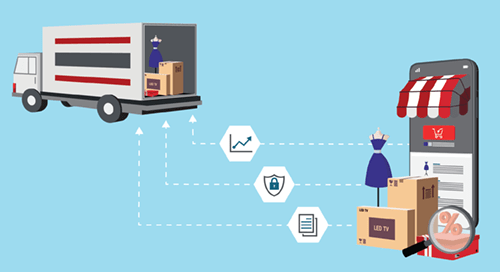APIs have been around for quite some time. But as of late, there's a greater incentive for businesses to apply a product mindset to these assets. Why would organizations find this valuable? These key drivers paint a clear picture.
01 Simplified partner onboarding
The faster you can securely onboard trading partners into your ecosystem, the faster you can get value from the relationship. An API product strategy accounts for partner connectivity, data integration, and validation testing so partners can be quickly onboarded no matter their industry, protocol, or data format.
02 Real-time ecosystem updates
It's no longer enough to move data around in batch mode to update your partner and customer ecosystem. Critical information needs to be updated in real time. Adopting an API product strategy establishes true transparency — giving your partners and customers a better experience, while allowing you to be more proactive.
03 Decreased time to market
Launching any new product or service is a significant, time-consuming investment. Embracing an API product strategy lets you unlock the latent value of what you already have to further innovation. By leveraging internal building blocks for interoperability you can get products and services to the market in less time.
04 Unified platform for products
When internal and external APIs are managed from a centralized provider and consumer hub, it supports standardization and innovation. Every line of business can access the data governance they need with the capacity to quickly build new business capabilities. It's the perfect blend of independence and control.
05 Increased account acquisition
Let's say you're a bank that adopts an API product strategy and then embeds those APIs into fintech apps and services. Enhanced solutions open the door to previously untapped target markets. By focusing on digital self-service channels, you'll extend your customer base and acquire more accounts.
06 More transaction volume growth
As the number of new accounts grows, so do transaction volumes. While total headcount and cost remain flat, banks often see significant annual growth in transactions for existing products and services. An API product strategy not only supports this revenue growth, but also ensures your infrastructure won't be overwhelmed by this increased activity.
07 Tiered pricing and quota-based offerings
An API product strategy gives you the opportunity to set up structured pricing plans. By offering a set of subscription plans that appeal to all your customers, you're able to monetize all your API products. At the same time, you're able to control the pricing structures and make adjustments as needed over time.
When it comes to the success of an API product strategy, adoption is king. A critical first step is to package and curate your APIs in a way that drives value. With sustainable value comes justification for continued API investments that can further grow your business.
Learn more about how to organize your APIs for digital business success













